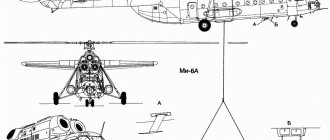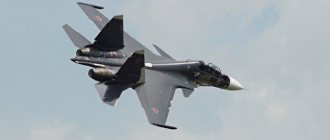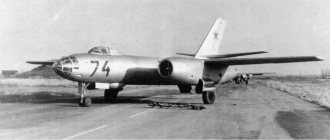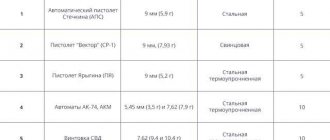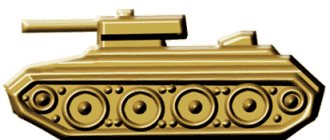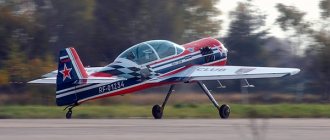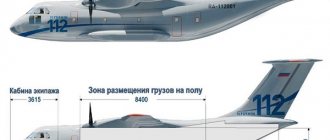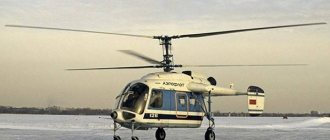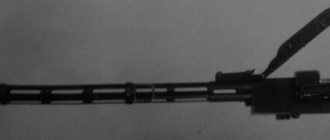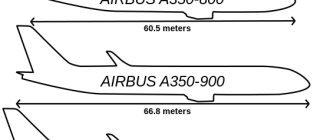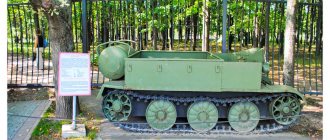Home » Books on aviation history » Unknown fighters of the Mikoyan Design Bureau. I-210. MiG-9 (first).
Books on the history of aviation Little-known and unrealized projects of aircraft and other flying equipment
boroda 05/17/2020 1126
17
to Favoritesin Favoritesfrom Favorites 2
In one of the previous articles we looked at the little-known long-range fighter MiG-5
.
Today we will talk about the unknown MiG-9 (first)
, which at the stage of its creation was a competitor to the legendary
Lavochkin La-5 . As far as everyone knows, the serial single-seat fighters of the Soviet Air Force with an air-cooled engine were designed by the Semyon Lavochkin Design Bureau . It was the La-5
and
La-7
that crushed the German hordes in the battles
of World War II . However, the story could have taken a completely different turn.
MiG-9 (I-210) fighter.
It all started in 1941. Then in May, in accordance with the order of the NKAP
Serial production of the new
M-82
.
After this, the leading design bureaus were given the task to study the possibility of installing this engine on their aircraft. OKB-155 by Artem Mikoyan
was also one of them.
For reference. ASh-82 (M-82) is a piston aircraft internal combustion engine, developed under the leadership of designer A.D. Shvetsova . Built according to an air-cooled star design. Became one of the most popular Soviet aircraft engines. Used on various types of aircraft - from fighters to passenger airliners.
History and general information[ | ]
Preliminary work on the creation of a fifth-generation heavy fighter for the Air Force and Air Defense began at the end of 1979 as part of the I-90 program (“fighter of the 1990s”). In 1981, TsAGI issued recommendations for an aircraft made according to the “canard” design with a delta adaptive wing and a large number of deflectable surfaces, providing high values of aerodynamic quality in both subsonic and supersonic modes, as well as flight at supercritical angles of attack.
The development of a new fighter began at the A. I. Mikoyan Design Bureau. In 1983, a “Comprehensive Target Program” of work on the aircraft, power plant, avionics and weapons was approved, as well as tactical and technical specifications for the Air Force and Air Defense. In 1987, the defense of the preliminary design took place, and in 1991, the preliminary design and mock-up of the aircraft, which received the index “MFI” - a multifunctional front-line fighter. Its main features were to be:
- super maneuverability;
- ability for supersonic flight in non-afterburning mode;
- low radar and thermal signature;
- improved takeoff and landing characteristics;
- a significant reduction in the cost of a flight hour, the amount of technical personnel, the volume and weight of non-standard equipment required to maintain the aircraft;
- new architecture of the avionics complex, structure of the cockpit information and control field, high degree of integration;
- will be equipped with the N014 radar, with a range of 420 km and the ability to detect an object with an area of 1 m² at a distance of 250 km; tracking 40 targets and firing 20 simultaneously; Passive electronically scanned array antenna.
In parallel with the work on a multifunctional front-line fighter based on the basic design, variants of a reconnaissance aircraft, a ship-based fighter and other modifications were being developed.
The crisis that broke out in 1991 put an end to the future fate of the aircraft. MAPO-MIG was unable to organize financing for the project under the new conditions. On September 25, 1997, the prototype of the S-37 front-line fighter (Sukhoi Design Bureau) took off - the MiG 1.44 had not taken off by that time.
Work on the MFI continued and on February 29, 2000, the first MiG 1.42 prototype took off. But a series of financial scandals that rocked MAPO-MIG put an end to this project. As a result, in 2002, a government decree was issued on the creation of the Su-57, which finally buried both the MFI and the S-37.
As of 2013, the only flightable prototype is located at the Flight Research Institute named after M. M. Gromov in Zhukovsky, abandoned in the open air (coordinates: 55°34′27″ N 38°08′32″ E HGЯOL). A decision was made to permanently preserve the specimen in the hangar.
Among a number of experts, there is an opinion that some technologies and general types of the aircraft were transferred to China, although, most likely, when creating their J-20, the Chinese used Project 1.46 drawings purchased from RSK MiG.
In June 2020, the Russian aviation corporation MiG announced the resumption of work on a promising light fighter[3]. Aviation experts suggest that they will be based on developments from Project 1.44.
Modifications[ | ]
Airplane with code 1.42
is a prototype on which the technologies of the MiG design bureau were tested under the I-90 project. 1 prototype built (1994) which was used for static testing.
Airplane with code 1.44
is a modified 1.42. He had to go into mass production and enter the army. 1 copy was built (1999), 4 more were in varying degrees of readiness at the time of project closure.
Airplane with code 1.46
is a deep modernization of 1.44, significantly superior to it in terms of performance characteristics. At the time the project was closed, preparations were underway for the construction of a prototype.
Specifications[ | ]
MiG-MFI in four projections MiG-MFI in four projections
- Crew:
1 person - Length:
17.3 m - Wingspan:
11.99 m - Height:
4.73 m - Weight: empty:
18000 kg - maximum take-off weight:
23500 kg
- Engine type:
turbojet bypass with afterburner and thrust vector control
"AL-41F"
2 × 18000 kgf
Flight characteristics[ | ]
- Maximum speed at altitude:
3210 km/h - Maximum ground speed:
1500 km/h - Practical range:
4000 km - Service ceiling:
20000 m - ESR:
less than 0.3 m²
Armament[ | ]
- Cannon:
30 mm built-in cannon GSh-30-1 - Combat load:
up to 16,000 kg
for air combat, in weapons bays:
12 × R-77 or R-73 - against ground targets, in weapons bays:
2 × Kh-55, Kh-61, Kh-41, or 8 × Kh-29, Kh-31, or 12 × KAB-500, ODAB-500
- internal:
12
8
The birth of the first aircraft in the Soviet Union with a new aerodynamic design
The experienced E-8 fighter-interceptor was developed as a deep modernization of the MiG-21 serial fighter. Balalaikas were regularly modernized from 1959 to 1972. The changes mainly consisted of installing more powerful engines, equipping with new weapons and equipment, and increasing the fuel supply. But in the case of the E-8, there were so many innovations in the design that the aircraft was given the independent index MiG-23. The main external differences of the E-8 were the air intake, which was located under the fuselage, and the front floating horizontal tail (FH). At subsonic flight speeds, the PGO tracked the direction of the air flow and did not create lift. But when the plane reached the speed of sound, it was fixed in a neutral position relative to the longitudinal axis of the plane. As a result, the aerodynamic focus shifted forward, maintaining the required margins of longitudinal stability when flying at supersonic speeds.
The effectiveness of such tails was tested on the experimental MiG-21F-13. The fixation occurred smoothly and did not complicate piloting. In this regard, it was possible to expand the range of overloads from 2.5 units to 5, which made it possible to improve the maneuverability of the fighter.
It was assumed that the main weapon of the E-8 would be K-13M radar-guided missiles. The increase in aircraft weight and drag had to be compensated by installing a more powerful R21-300 engine. But the Basalt radar never appeared, and the plane had to be adapted to the Sapphire.
In popular culture[ | ]
The MiG-MFI is present in the video games Jetfighter V: Homeland Protector, Jetfighter 2020, Ace Combat 5: The Unsung War, Ace Combat X: Skies of Deception, Command & Conquer: Generals, Command & Conquer: Generals Zero Hour, Ace Combat X2: Joint Assault, Tom Clancy's HAWX 2, Ace Combat: Assault Horizon Legacy, Ace Combat: Infinity. It is worth noting that the reflection of the tactical and technical characteristics of aircraft and the features of its use in combat in many computer games is often far from reality.
The Russian company also produces a kit model of a fighter in 1/72 scale.
MiG-9 design
The MiG-9 is a single-seat fighter aircraft with an all-metal structure and a power plant consisting of two turbojet engines. Schematically, it is a monoplane with a retractable tricycle landing gear and a mid-wing.
The fuselage is made as a semi-monocoque and has a working smooth skin. The load-bearing frame of the bow contains 15 frames and 4 spars of variable cross-section, a set of stringers and two beams each for attaching the front landing gear and the weapon mount. The power frame of the tail section contains 20 frames, 4 spars, 2 ribs for fixing the main landing gear and a set of stringers. The docking of the forward part of the fuselage with the tail part was carried out using eight fittings.
The nose section has two tunnels that supply air to the engine compressors from the frontal air intake. The channels had an elliptical cross-section and ran along the sides of the fuselage skin.
The power frame of the bow included air tunnels.
The pilot's cabin was located between frames No. 6 and No. 11. The cockpit canopy had a streamlined shape and consisted of a moving part, which moved in three directions, and a visor.
The wing had a trapezoidal shape and a relative thickness of 9% over the entire span. The wing's load-bearing frame included 2 spars, 21 ribs and a set of stringers. The wing profile was combined: between ribs No. 1-No. 3 - low-load TsAGI 1-A-10, between No. 3-No. 6 - transitional, and No. 6-No. 21 - load-bearing TsAGI 1-B-10. Thanks to the use of this combination, the risk of a spin during flight at a high angle of attack was minimized. The wing was equipped with Frize-type ailerons and flaps from TsAGI. The aileron deflection angles are 22.5° up and 14.5° down, the flap deflection angles on takeoff are 22.5°, on landing – 50°.
The tail unit of the all-metal structure is cantilevered and has a high-mounted stabilizer.
The chassis design is tricycle with a front strut. The main landing gear has an oscillating fork and remote shock absorbers. The front support is equipped with a hydraulic damper and an oscillating fork. The chassis has oil-hydraulic shock absorption. The main struts are equipped with single-brake wheels, the size of which is 660 x 160; the nose strut had a non-brake wheel (480 x 200). The landing gear release and retraction system is pneumatic.
The power plant consisted of two RD-20 turbojet engines, each having a thrust of 800 kg. Initially, MiG-9 fighters were equipped with A-1 engines with a service life of 10 hours, which were received as trophies and represented by BMW-003 engines redesigned in the USSR. Later, the power plant was replaced by RD-20 motors with a resource of 25 and 50 hours, produced at Kazan plant No. 16, and then RD-20B, with a resource of 75 hours.
The engines were positioned parallel to the bottom of the fuselage. The power plant was started using Riedel starting motors. Since the generator was fixed on the left engine, it was recommended to start without it. B-78 or B-70 gasoline was used as starting fuel, the total reserve of which was 12 liters. The starting engines' gas tank had a capacity of 2 liters and was located on the right engine.
The engine nozzle cones could be placed in four positions: “launch”, “take-off”, “flight” and “high-speed flight”. The cone control system is fly-by-wire.
The fuselage was protected from hot gases by using a protective screen. It had a ridge that separated gas flows. The beginning of the ridge was on frame No. 19, and at frame No. 34 it ended, representing a protective screen from frame No. 29. The inner lining of the protective device was made of 0.5 mm thick duralumin sheet, and the outer lining was made of 1.2 mm heat-resistant steel. In the area of the protective screen, a gap of 15 mm is left between the outer and inner skin, which serves for the passage of cooled air.
The fuel system included four fuselage and six wing tanks, the total capacity of which reached 1595 liters. All tanks, except tank No. 4, had a soft structure. The engines were powered by kerosene, which came from tank No. 2.
The fuel tanks were connected in such a way as to distribute fuel evenly on both sides, ensuring the aircraft was centered during flight.
MiG-25 equipment
Initially, the aircraft was equipped with the RP-25 Smerch-A radar, which was created for Tu-128 fighter-interceptors. Immediately after the hijacking of the plane in Japan, the MiG-25 began to be equipped with a new Sapphire S-25 radar station and a new weapons system.
Also, the Soviet aircraft was equipped with:
- automatic control system SAU-155R1, or SAU-155P1;
- navigation system SAU-155R1;
- heat generator 26SH-1;
- radio command guidance system "Lazur" (interceptor);
- ARK-10 radio compass;
- high-altitude radio altimeter RV-184;
- air defense system L006 "Beryoz" or "Sirena-3M";
- short-range radio navigation system RSBN-6S “Coral”;
- intercom SPU-7;
- defendant SO-63B;
- air signal system SVS-PN-5;
- speech informant RI-65;
- voice recorder MS-61, etc.
All interceptors received the Polet-1I system as part of their equipment. It included radio engineering systems for navigation, heading, autopilot and air signals. The reconnaissance aircraft were equipped with A-70 or A-72 photographic equipment, a Kub-3M, Virazh or Pitch radio reconnaissance station, and a Sablya radar, responsible for lateral visibility.
MiG-25 photo
Description
The MiG-3 is a single-engine cantilever monoplane with a low wing. The fighter had a closed cockpit and a retractable three-post landing gear.
The nose of the MiG-3 fuselage and the engine mount were made of chrome steel pipes, which were covered on top with duralumin sheets secured with locks. The center section of the aircraft was completely all-metal, the rear fuselage and wing consoles were made of wood. The tail section was a monocoque structure with stringers and frames sheathed on top with several layers of plywood. The horizontal tail, ailerons and rudder were made of duralumin.
The cockpit canopy consisted of three parts: a fixed visor, a movable central part that moved back, and a rear fixed part. When leaving the cabin in an emergency, the rear part of the canopy was dropped using a special spring mechanism, dragging the central part of the canopy with it. On later series of the aircraft, the visor was made of armored glass.
Due to the use of a powerful, large engine, the cockpit was located at the rear of the fuselage.
Two fuel tanks with a total capacity of 640 liters were located in the center section and fuselage of the aircraft. Two additional fuel tanks could be hung under the wings.
The all-wood wing consoles had a frame made of spar, stringers and ribs; the wing was sheathed on top with several layers of bakelite plywood.
The wooden keel was integral with the rear part of the fuselage, the stabilizers and rudder had a duralumin structure covered with fabric.
The MiG-3 had a three-post landing gear with a tail wheel. Its release mechanism is pneumatic. The main landing gear was fixed to the end ribs of the center section; they were retracted towards the fuselage and went into special niches. When retracted, the chassis was covered with flaps. To determine the position of the main landing gear, an electrical alarm with mechanical backup was used. The rear wheel of the crutch type had oil-air shock absorption and was covered with a shield when retracted.
The MiG-3's armament included a 12.7 mm BS machine gun and two 7.62 mm ShKAS machine guns. They were installed above the engine.
Some aircraft were additionally armed with two 12.7 mm Berezin machine guns, which were suspended in special gondolas under the wings.
For the first time, oxygen equipment was installed on the MiG-3 fighter; it consisted of the device itself, an oxygen cylinder and a mask with a hose.
Content
- 1 Use of notation in other projects
- 2 History
- 3 Features
- 4 Production
- 5 Main differences between the MiG-35 and the MiG-29
- 6 MiG-35 copies
- 7 Flight performance 7.1 Technical characteristics
- 7.2 Flight characteristics
- 7.3 Armament
- 7.4 Avionics
